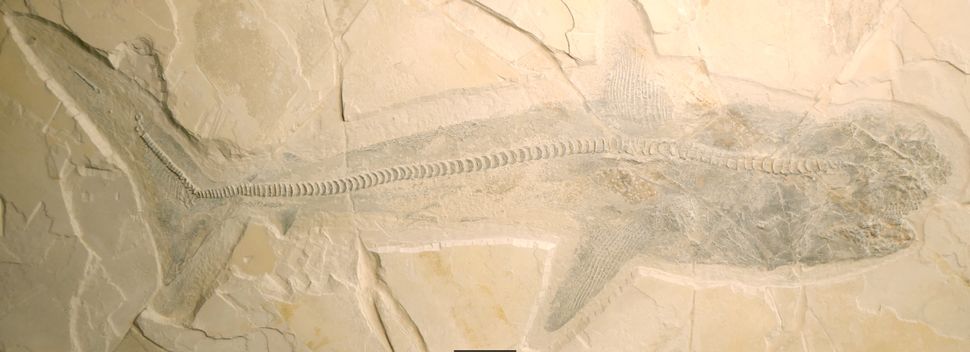General Discussion
Related: Editorials & Other Articles, Issue Forums, Alliance Forums, Region ForumsAncient, 30-foot relative of great white shark unearthed in Mexico quarry
"Exceptionally preserved" fossils of an ancient shark that lived alongside the dinosaurs has finally revealed what the predator looked like — and why it may have gone extinct.
Complete fossils from an enormous shark that lived alongside the dinosaurs reveal crucial information about this enigmatic predator — including it being an ancient relative of the great white shark.
The sharks, from the genus Ptychodus, were first discovered in the mid-eighteenth century. Descriptions of this genus were largely based on their teeth — which could be nearly 22 inches (55 centimeters) long and 18 inches (45 cm) wide, and were adapted for crushing shells — found in numerous marine deposits dating to the Cretaceous period (145 million to 66 million years ago).
Without the ability to examine a fully intact specimen, researchers had hotly debated what the shark's body shape might look like — until now. "The discovery of complete Ptychodus specimens is really exciting because it solves one of the most striking enigmas in vertebrate paleontology," lead author Romain Vullo, a researcher at Géosciences Rennes, told Live Science in an email.
In a study published Wednesday (April 24) in the journal Proceedings of the Royal Society B: Biological Sciences, researchers have described complete fossils of the shark discovered in limestone quarries in Nuevo León, northeastern Mexico. Its outline was still fully preserved, and its body shape suggests it hunted sea turtles — which could explain its extinction around 76 million years ago as it was competing with other animals that ate the same prey.

The "exceptionally preserved" fossil unearthed in a limestone quarry in northeastern Mexico. (Image credit: Vullo et al/Proceedings B)
https://www.livescience.com/animals/sharks/ancient-30-foot-ancestor-of-great-white-shark-unearthed-in-mexico-quarry?utm_term=55C996C6-4393-4B13-9736-9BEC0BC6AFA6&lrh=990ccd8e582dc48a5de81889b47c5d726c369528246fb5cf774b4c820833a528&utm_campaign=368B3745-DDE0-4A69-A2E8-62503D85375D&utm_medium=email&utm_content=30533522-7AA1-48EA-9937-14374834AD2F&utm_source=SmartBrief
dchill
(38,556 posts)That's cool story #2 for the last few minutes! Carry on!
Love4u
(15 posts)That is really cool. I love hearing about these types of things. What a great find.
I hope it ends up in a museum.
Grins
(7,239 posts)Not too hard to fashion a simple model 22x18” and - Wow!
But did they mean teeth or tooth?
18” base per tooth, upper, lower, left and right takes up a lot of space. 1/3rd to 1/2 it’s 30-foot length!
eppur_se_muova
(36,301 posts)In addition to turtles, it probably ate the large, bottom-dwelling oysters of the Western Interior Seaway (see Inoceramis), as did the icthyosaur Globidens, as well as ammonites.

Yes, the dimensions given appear to be correct.